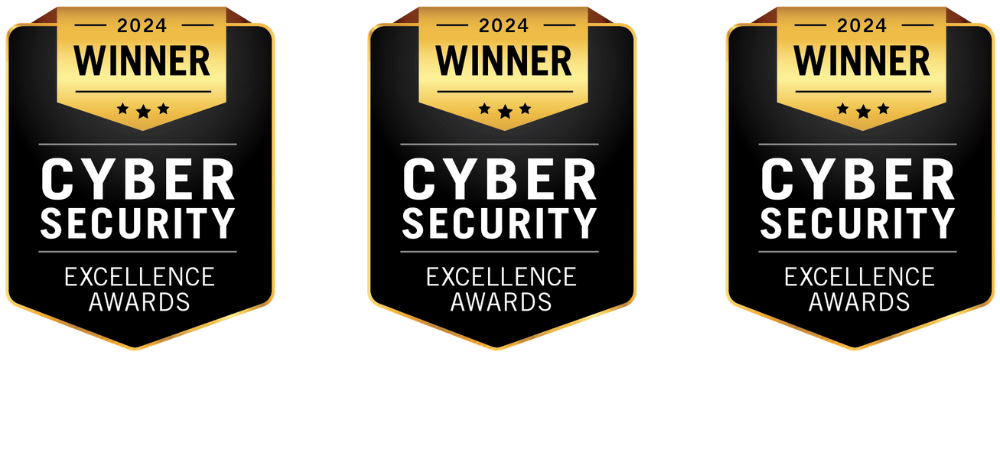Cyber threats are sharper and more widespread than ever before, consistently finding new entry points across our intricate digital world, from sprawling cloud environments and complex APIs to the mobile apps we rely on and even dynamic containerized workloads. Relying solely on reactive security measures is no longer enough; the digital battlefield of 2025 demands a proactive stance.
This is precisely why penetration testing stands out as an absolutely critical practice. It’s your organization’s best defense, a systematic way to uncover those hidden security gaps and vulnerabilities before malicious actors can exploit them. However, as IT infrastructures grow more complex, the rigid, outdated approaches to pen testing simply can’t keep pace.
We’ll show you exactly how leading security professionals are executing these vital assessments in 2025 – integrating advanced automation, leveraging irreplaceable manual expertise, and ensuring every effort is strategically aligned with your core business objectives. Prepare to gain the insights needed to significantly strengthen your digital defenses.
What Is Penetration Testing?
Penetration testing (or pentesting) is a structured process where ethical hackers simulate real-world attacks to assess how secure your systems, networks, and applications really are.

There are several types:
1. Network Penetration Testing:
Network penetration testing focuses on evaluating the security of an organization’s IT infrastructure. This includes internal and external networks, routers, firewalls, and other devices that could serve as access points for attackers.
Key objectives:
- Identify misconfigurations in network devices.
- Detect vulnerable services and open ports.
- Assess risks like weak credentials, outdated protocols, and insecure network architectures.
2. Web Application Penetration Testing:
Web application penetration testing evaluates the security of web-based applications and APIs. It’s critical because web apps are among the most targeted assets.
Key objectives:
- Detect vulnerabilities like SQL Injection, Cross-Site Scripting (XSS), Cross-Site Request Forgery (CSRF), and broken authentication.
- Assess API endpoints for improper authorization and sensitive data exposure.
- Test session management and business logic for flaws that automation might miss.
3. Mobile Application Penetration Testing
Mobile app penetration testing assesses security risks in Android and iOS applications. With mobile usage dominating access to services, this type of testing has become a necessity.
Key objectives:
- Identify insecure data storage and transmission.
- Check for improper platform usage, such as misuse of permissions or APIs.
- Assess reverse engineering risks from APK/IPA files.
- Evaluate API security for mobile backends.
4. Cloud and IoT Penetration Testing:
Cloud and IoT pentesting targets security gaps in cloud environments (AWS, Azure, GCP) and interconnected IoT systems. For Cloud:
Key objectives include:
- Evaluating IAM (Identity and Access Management) configurations.
- Checking for exposed storage buckets (like S3 misconfigurations).
- Testing containerized and serverless deployments.
A strong methodology for penetration testing ensures each test is repeatable, thorough, and aligned with compliance standards like PCI DSS, HIPAA, and GDPR.
Our Solution: Cloud Pentesting & Cloud Configuration Review
Why Penetration Testing Needs an Updated Approach in 2025
With enterprises embracing hybrid and multi-cloud strategies, the attack surface has expanded dramatically. Add to this the rise of AI-powered attacks, API sprawl, and misconfigured identity systems, and you’re looking at an environment where old testing techniques simply don’t scale.
In 2025, penetration testers rely on modern frameworks such as:
1. OWASP Web Security Testing Guide
The OWASP Web Security Testing Guide (WSTG) is one of the most widely adopted frameworks for web application penetration testing. It provides a comprehensive checklist covering modern web app vulnerabilities and testing techniques.
- Why It’s Important in 2025: Web technologies are evolving fast Single Page Applications (SPAs), GraphQL APIs, and serverless functions are now standard. Attackers are exploiting flaws in these areas that traditional testing often misses.
- The WSTG offers detailed test cases for:
- Authentication and session management flaws.
- Input validation issues leading to SQL Injection or Cross-Site Scripting (XSS).
- API-specific risks, like broken object-level authorization (BOLA).
Modern pentesters use it as a baseline to ensure no critical web security area is overlooked.
2. MITRE ATT&CK Matrix
The MITRE ATT&CK Matrix is a knowledge base of adversary tactics and techniques based on real-world cyberattacks. It maps out how attackers progress from initial access to exfiltration.
- Why It’s Important in 2025: Threat actors are more sophisticated. They use advanced lateral movement techniques, persistence methods, and privilege escalation strategies.
- The ATT&CK Matrix helps testers simulate realistic attack paths by:
- Identifying the techniques attackers use in similar environments.
- Mapping vulnerabilities to attacker behavior.
- Designing red team exercises that reflect current threat trends.
By aligning penetration tests with MITRE ATT&CK, organizations get insights not just into what’s vulnerable, but how an attacker might exploit it step by step.
3. NIST SP 800-115
NIST SP 800-115 (Technical Guide to Information Security Testing and Assessment) is a U.S. government publication outlining standards for conducting security assessments.
- Why It’s Important in 2025: Many industries now require NIST-aligned testing for regulatory compliance, including healthcare, finance, and federal contractors.
- The guide covers:
- Planning and scoping a security assessment.
- Choosing between vulnerability scanning, penetration testing, and security audits.
- Reporting and delivering actionable recommendations.
Pentesters often use NIST SP 800-115 as a framework to align testing practices with legal and compliance requirements.
4. PTES (Penetration Testing Execution Standard)
PTES provides a structured approach to conducting penetration tests. It breaks down the process into seven phases, from pre-engagement to post-exploitation.
- Why It’s Important in 2025: PTES emphasizes flexibility and depth, critical for testing modern hybrid environments that combine on-premise, cloud, and IoT systems.
- Its phases include:
- Pre-engagement interactions.
- Intelligence gathering.
- Threat modeling.
- Exploitation and post-exploitation.
- Reporting and remediation support.
For testers, PTES acts as a roadmap to deliver thorough, repeatable, and professional pentest engagements. These frameworks help build a testing approach tailored for today’s security challenges.
Step-by-Step Penetration Testing Methodology
1. Planning and Scoping
This is the foundation of every penetration test. It sets expectations for both the client and the testing team.
Key activities include:
- Defining objectives: Is the goal to test compliance? Or to simulate a full-blown breach?
- Identifying in-scope assets: Websites, cloud environments, mobile apps, networks.
Agreeing on rules of engagement:
- Black-box – Minimal prior knowledge.
- White-box – Full system knowledge.
- Gray-box – Partial knowledge, like a rogue insider.
Setting compliance boundaries to avoid legal or regulatory risks.
2. Reconnaissance (Information Gathering)
The next step involves gathering as much intelligence as possible about the target.
Techniques include:
- Passive Reconnaissance – Using public sources like WHOIS, Shodan, Censys, and social media.
- Active Reconnaissance – Scanning ports and services with tools like Nmap, Netcat, and Masscan.
This phase helps build a profile of the target environment without triggering alarms.
3. Threat Modeling and Attack Surface Mapping
Here, testers identify high-value targets and map potential entry points.
- Asset discovery using Attack Surface Management (ASM) tools.
- Visualizing relationships between systems to uncover weak links.
- Prioritizing systems based on sensitivity and exposure.
This step ensures efforts are focused where attackers are most likely to strike.
4. Vulnerability Analysis
With assets identified, the testing team searches for vulnerabilities.
Two approaches:
- Automated Scanning – Tools like Nessus, OpenVAS, and Burp Suite scan for known issues.
- Manual Verification – Human testers validate findings to eliminate false positives and discover logic flaws that automation misses.
Prioritization is critical. Exploiting a high-risk vulnerability matters more than a minor misconfiguration.
5. Exploitation
This is where testing moves from identification to action. Ethical hackers attempt to exploit vulnerabilities to measure real-world impact.
Examples of exploitation include:
- SQL Injection attacks to extract databases.
- Cross-Site Scripting (XSS) to hijack user sessions.
- Privilege escalation to gain administrator access.
The goal isn’t destruction. It’s to prove the risk exists with controlled, documented exploitation.
6. Post-Exploitation and Pivoting
After initial access, testers explore how far they can move laterally within the network.
Activities include:
- Enumerating additional systems.
- Testing persistence mechanisms (only if agreed in scope).
- Simulating data exfiltration.
This step reveals the extent of damage a real attacker could cause after breaching a single system.
7. Reporting and Recommendations
Reporting isn’t just about listing vulnerabilities. It’s about telling a story.
A strong report includes:
- Executive summary for non-technical stakeholders.
- Technical details with risk ratings (CVSS scores).
- Proof of concept (screenshots, logs).
- Actionable remediation guidance.
Clear, concise reporting empowers security teams to fix issues effectively.
8. Retesting (The Often Forgotten Step)
Once fixes are applied, retesting confirms that vulnerabilities are resolved.
This phase ensures that:
- Patches are correctly implemented.
- No new issues were introduced during remediation.
- Systems are more resilient against real-world threats.
In 2025, continuous penetration testing cycles are becoming standard for organizations seeking 24/7 assurance.
How to Maximize the Impact of Penetration Testing in 2025
1. Start with Clear Goals Aligned to Business Priorities:
The success of a penetration test begins long before the tools are launched. Setting clear, business-aligned goals ensures that the testing effort focuses on what matters most to your organization.
How to Implement It:
- Identify the most valuable assets and critical business functions (e.g., customer data, payment systems, or intellectual property).
- Set goals based on what your business seeks to protect (e.g., ensuring compliance, preventing data loss, or testing the effectiveness of your firewalls).
- Align the scope of the test with these business priorities to ensure you’re testing the right things at the right depth.
2. Mix Automated Tools with Skilled Manual Testing:
Automation is a vital part of modern penetration testing. Tools like vulnerability scanners and network scanners can quickly identify known weaknesses. However, automation has limitations; it can’t replicate the judgment or creativity of skilled human testers who think like attackers.
How to Implement It:
- Start with automated scans to quickly find the “low-hanging fruit” vulnerabilities that are easy to exploit.
- Complement these findings with manual testing that focuses on areas where automated tools fall short, such as logic flaws, business-critical vulnerabilities, and sophisticated attack chains.
- Leverage both approaches in tandem to maximize the test’s depth and effectiveness.
3. Keep Testing Methodologies Updated for New Technologies like AI and Serverless Computing
The cyber threat landscape is constantly evolving, and so should your penetration testing approach. In 2025, technologies like AI, serverless computing, and microservices will be more widespread than ever. These innovations bring new vulnerabilities and attack vectors that traditional testing methodologies may not address.
How to Implement It:
- Ensure that your penetration testing methodology is adaptable to new technologies by incorporating frameworks that cover modern risks (e.g., OWASP for web apps and APIs, MITRE ATT&CK for AI-powered attacks).
- Regularly update your tools and testing practices to include assessments for emerging technologies like serverless, containers, and AI-based attacks.
- Invest in ongoing training for your testing team to keep up with the latest attack techniques and vulnerabilities associated with these new technologies.
4. Retest After Remediation to Validate Fixes:
Once vulnerabilities are found and addressed, the process doesn’t end there. Retesting is an often overlooked but critical step in ensuring that remediation efforts are successful and have not introduced new vulnerabilities.
How to Implement It:
- Plan retesting as part of the overall penetration testing lifecycle. Once vulnerabilities are fixed, don’t just assume they’re gone; ensure that they’ve been fully resolved.
- Conduct a thorough retest, especially focusing on areas where changes were made. This should include not only the original vulnerabilities but also any new weaknesses introduced by the patch or fix.
- Incorporate retesting into a continuous security improvement cycle to verify that security remains strong even after patches are applied.
Common Pitfalls to Avoid
Penetration testing can be a highly effective way to secure your systems, but only if executed correctly. Many organizations make mistakes that weaken the impact of their testing efforts. Below are the most common pitfalls to avoid to ensure your penetration testing is thorough, effective, and provides real value.
1. Limiting Scope Too Narrowly, Leaving Critical Assets Untested:
One of the most damaging mistakes in penetration testing is limiting the scope of the test too narrowly. This can result in critical systems or assets being overlooked, which means that potential vulnerabilities in those areas go undetected.
How to Avoid It:
- Define the scope based on risk: Ensure all critical systems, assets, and entry points are included, whether they are on-premise, in the cloud, or part of your mobile app infrastructure.
- Prioritize high-risk assets: Map out the attack surface and ensure the most business-critical assets are in scope for the test, including APIs, databases, and internal networks.
- Conduct periodic tests: Instead of one-off tests, consider implementing continuous penetration testing to cover evolving environments.
2. Over-Reliance on Automated Scanners:
Automated vulnerability scanners are useful for quickly identifying known vulnerabilities. However, relying too heavily on these tools can lead to missed issues, especially those that require human expertise or a deeper understanding of the system’s logic.\
How to Avoid It:
- Combine automated scans with manual testing: Automated tools should be used to catch the easy-to-find vulnerabilities, but human expertise is required to test more complex issues, such as business logic vulnerabilities or advanced attack techniques.
- Use manual testing to complement automation: Skilled testers can go beyond the basics to find unique, difficult-to-detect weaknesses that automated tools might miss.
- Ensure a balanced approach: Use automation for efficiency, but never at the cost of thoroughness. Always follow up with manual, expert-level analysis to ensure a comprehensive test.
3. Failing to Communicate Findings Effectively to Non-Technical Teams:
Penetration testing results can be highly technical, but clear communication is essential. If findings are not communicated effectively to non-technical stakeholders, such as business leaders or management, the impact and urgency of fixing vulnerabilities may be lost.
How to Avoid It:
- Use plain language: When reporting findings, avoid overly technical jargon and focus on the business impact. For example, instead of stating “SQL injection vulnerability in the payment API,” explain “an attacker could exploit this flaw to access sensitive customer data and potentially steal payment information.”
- Provide actionable recommendations: Offer clear, business-focused recommendations alongside technical details. Help the business understand what actions they need to take, such as updating configurations, enforcing stronger authentication, or patching outdated software.
- Provide an executive summary: Summarize the most critical findings, along with their potential business impact, in a format that’s easy for non-technical teams to understand.
4. Skipping Retesting After Vulnerabilities Are Fixed:
Once vulnerabilities are identified and fixed, retesting is essential to ensure that the fixes are effective and that no new vulnerabilities were introduced during the remediation process. Skipping this step can leave your systems vulnerable again after remediation.
How to Avoid It:
- Conduct retesting as part of your testing cycle: Once vulnerabilities are fixed, make retesting an integral part of the process to confirm that remediation efforts have been successful.
- Verify the fix: Retest the vulnerabilities that were patched, and also check to see if the fixes have introduced any new issues.
- Implement continuous testing: Consider adopting a continuous penetration testing model to regularly verify that vulnerabilities remain patched and new issues do not emerge over time.
Conclusion: Penetration Testing Methodology
Penetration testing in 2025 is no longer a one-time checklist activity. It demands a structured, updated methodology for penetration testing to keep pace with cloud-native environments, API-heavy architectures, and AI-powered threats. Organizations that rely on outdated testing approaches risk leaving critical gaps exposed.
At Strobes, we understand these challenges. Our team combines modern testing frameworks like OWASP, MITRE ATT&CK, NIST, and PTES with advanced automation to deliver penetration tests that are faster, deeper, and aligned to your business risks.
Whether you need a one-time assessment or a continuous testing approach, we help you uncover security gaps before attackers do, so your teams can focus on remediation with confidence. Book a Personalized demo today and see how penetration testing secures your data from threats.
Related Reads:
- Decoding the Penetration Testing Process: A Step-by-Step Guide
- Strobes Penetration Testing Compliance For Audits and Assessments
- Web Application Penetration Testing: Steps & Test Cases
- Why Penetration Testing Is Important: Enhancing Security & Reducing Cyber Risks
- How much does a penetration test cost?
- Solution: Pentesting as a Service









